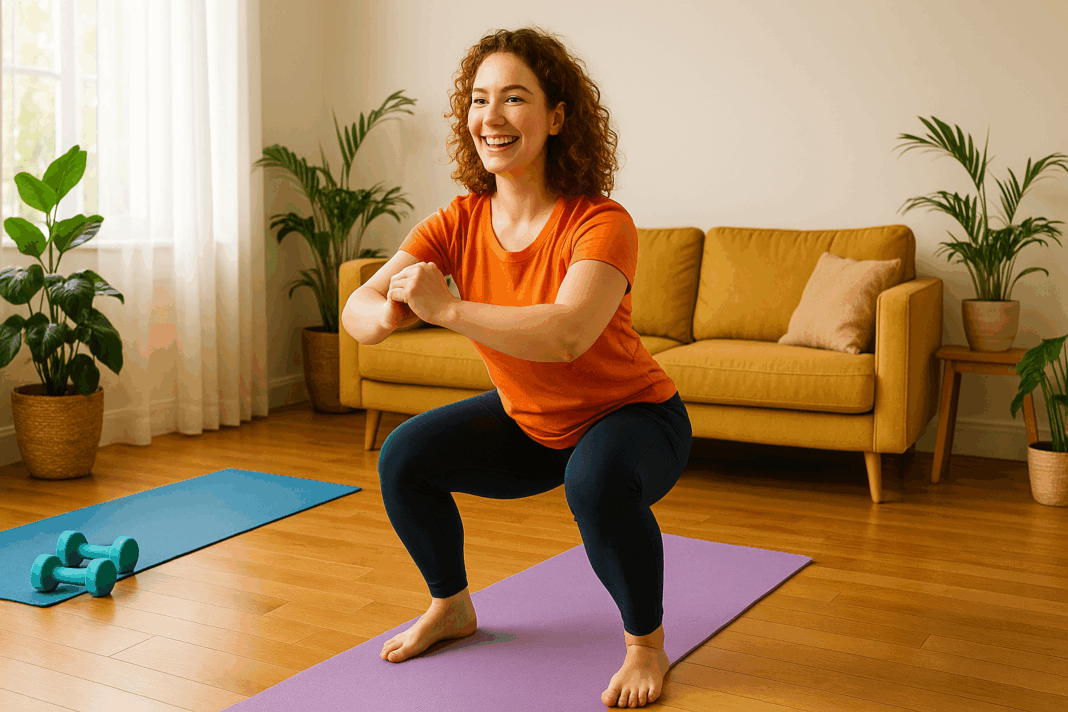A Smarter Way to Get Fit: Why 15 Minutes a Day Can Make a Big Difference
In the fast-paced rhythm of modern life, carving out time for an hour-long workout often feels like an unattainable luxury. Between work commitments, family responsibilities, and personal errands, it’s no surprise that many individuals struggle to maintain a consistent fitness regimen. However, emerging research and real-world experience are converging on a compelling truth: it is entirely possible to boost strength and stamina naturally with just a 15 minute exercise routine performed consistently at home. The notion of dedicating a small pocket of time—merely a quarter of an hour—to a focused, intentional fitness practice has become a game-changer for beginners and busy professionals alike.
You may also like: How to Increase Stamina and Endurance Naturally: Smart Training Tips and Nutrition Habits That Support Cardiovascular Fitness
Unlike extended gym sessions that often require additional travel and preparation time, a 15 minute easy workout can be seamlessly incorporated into your daily routine without disrupting your schedule. More importantly, the cumulative benefits of such a regimen—improved cardiovascular health, increased muscular endurance, enhanced mental clarity—are substantial and well-documented. Experts in exercise science have noted that even brief bursts of moderate-to-intense physical activity can stimulate metabolic changes, promote fat oxidation, and support cardiovascular resilience. By focusing on functional movements and bodyweight exercises, a 15 minute workout for beginners can yield both short-term motivation and long-term wellness benefits.
From a physiological standpoint, short-duration workouts stimulate adaptations in muscle fibers, boost mitochondrial density, and encourage the efficient utilization of oxygen—factors that are essential for endurance and performance enhancement. Moreover, engaging in consistent 15 minutes exercise at home aligns with principles of habit formation and sustainable behavior change. It reduces psychological resistance, removes the intimidation of overly complex routines, and empowers individuals to take control of their health in an accessible and empowering way.
What follows is a detailed guide to a scientifically grounded, home-friendly fifteen minute workout that supports endurance, strength, and stamina in a balanced, manageable way. With an emphasis on quality over quantity, the routine is designed to challenge your body without overwhelming it. Whether you’re just beginning your fitness journey or seeking an efficient way to stay active, these insights will help you make the most of every minute.

Understanding the Science Behind Short-Duration Workouts
The physiological basis for short-duration, high-efficiency workouts is rooted in the principles of exercise science, particularly the body’s response to time-under-tension and metabolic stress. Even when limited to a 15 minute exercise, the right combination of exercises can elevate the heart rate, activate major muscle groups, and stimulate anaerobic and aerobic energy systems simultaneously. This means you’re not just burning calories—you’re improving your body’s capacity to perform under physical demand.
Numerous studies have shown that interval-based training within a 15 min exercise window can significantly improve VO2 max, which measures the body’s ability to use oxygen during intense activity. This enhancement directly correlates with increased endurance, better cardiovascular health, and improved recovery times. Moreover, the brief rest periods common in these routines challenge the body to adapt more efficiently, supporting long-term stamina gains. The repeated stress-and-recovery cycle, even in a compact time frame, mimics the adaptations achieved in longer sessions when performed consistently.
Beyond the aerobic benefits, resistance-based movements incorporated into a 15 minute workout for beginners can drive hypertrophy and strength development, especially when bodyweight resistance is applied with intentionality. Exercises such as squats, lunges, push-ups, and planks engage multiple muscle groups simultaneously, enhancing neuromuscular coordination and functional movement patterns. For beginners, this kind of integrated training improves foundational fitness, setting the stage for more advanced routines as strength and stamina grow over time.
In terms of hormonal response, short, intense workouts can elevate endorphin levels, boost dopamine, and trigger a cascade of beneficial biochemical reactions that promote mood stability and cognitive focus. This is especially advantageous for individuals experiencing stress or fatigue from daily life, as a fifteen minute workout at home can serve as a powerful reset for both body and mind. Unlike longer sessions that may lead to physical burnout or mental fatigue, these short routines often leave participants feeling energized rather than depleted.
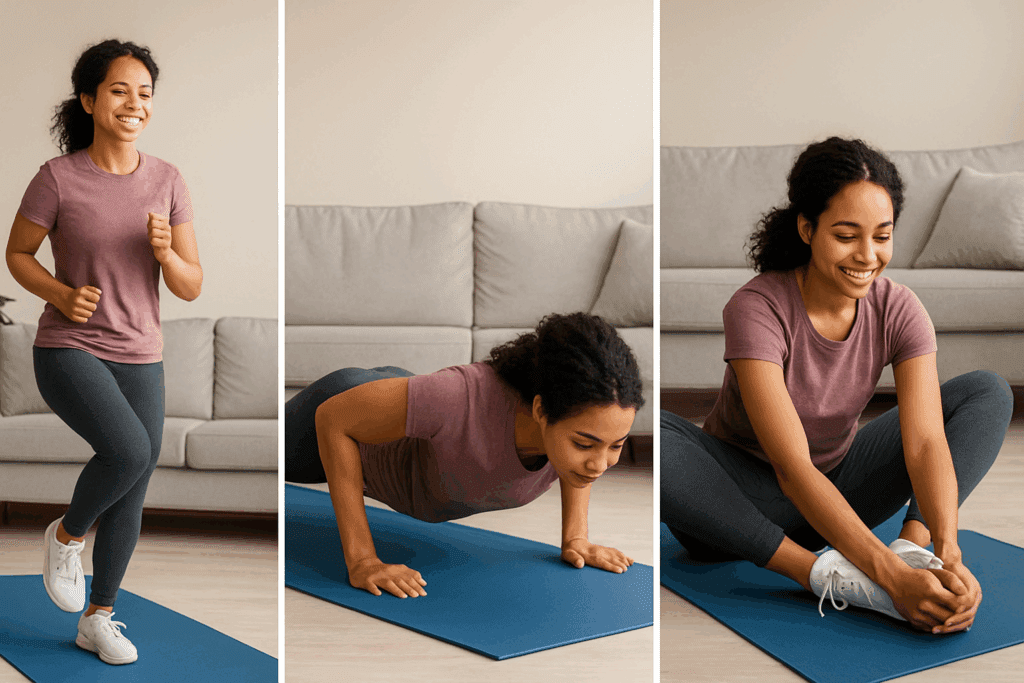
Designing the Perfect 15 Minute Exercise Routine for Home Use
Creating a 15 minute exercise routine that is both efficient and accessible starts with selecting movements that engage the entire body while remaining simple enough for beginners. The ideal workout should follow a structured format that includes a brief warm-up, a main workout block with compound exercises, and a cool-down period to support recovery and flexibility. With this foundation, anyone can experience the benefits of fitness in 15 minutes, regardless of their starting point.
The warm-up phase might include 2-3 minutes of dynamic movements such as arm circles, high knees, or jumping jacks to increase blood flow and prepare joints for more strenuous work. These exercises not only activate the cardiovascular system but also increase synovial fluid in joints, reducing the risk of injury. Following the warm-up, the core 10 minutes should include a circuit of bodyweight exercises performed at a steady pace. For example, alternating squats, incline push-ups, glute bridges, and bird-dog exercises can offer a full-body challenge without requiring any special equipment.
To amplify the effects of a 15 minute exercise workout, incorporate time intervals such as 30 seconds of work followed by 10 seconds of rest. This structure keeps the heart rate elevated while allowing just enough recovery to maintain form and focus. While the intensity can be modulated according to individual fitness levels, maintaining a brisk tempo will ensure that each session builds both muscular strength and aerobic capacity. For beginners, the key is consistency—performing the routine daily or every other day will yield cumulative benefits without overstressing the body.
A well-designed cool-down should not be neglected, even in a brief session. Incorporating deep breathing, gentle stretches for the hamstrings, quads, shoulders, and lower back, and a few minutes of mindfulness can support recovery and reinforce the mind-body connection. This ritual signals to the nervous system that the stress phase has ended, allowing the parasympathetic system to take over and promote recovery. In this way, a 15 min exercise at home becomes not just a physical activity but a holistic wellness practice.

The Role of Consistency in Building Endurance and Strength
One of the most overlooked aspects of effective fitness routines is not complexity or duration, but consistency. A 15 minute workout for beginners performed daily can yield greater results than an infrequent hour-long session. This is because the body adapts through regular exposure to physical stimulus, gradually building strength, increasing stamina, and reinforcing neuromuscular patterns. When fitness becomes a habit, it becomes less about motivation and more about identity—something you simply do as part of your daily rhythm.
The psychological aspect of consistent training cannot be overstated. Setting achievable goals—like completing a 15 minute exercise each morning before breakfast—provides a sense of accomplishment and routine. This reliability builds confidence, especially for those who may have struggled with fitness adherence in the past. As consistency builds, so does capacity; exercises that once felt challenging become manageable, allowing for progressions in intensity or duration as appropriate.
Another benefit of regular short workouts is injury prevention. Because a fifteen minute workout does not overly fatigue the body, it lowers the risk of strain, improper form, or overtraining. It also allows for more precise recovery, which is essential for muscular growth and joint stability. When training is consistent but not excessive, the immune system stays robust, energy levels remain steady, and sleep quality improves—factors that directly enhance physical performance over time.
Furthermore, integrating 15 minutes exercise at home into your daily schedule creates minimal disruption. There’s no need to travel to a gym or arrange for special gear, which removes common barriers to entry. This ease of access encourages daily engagement, and the regularity reinforces physical literacy—your body becomes more attuned to movement, coordination, and spatial awareness. Ultimately, consistency transforms a brief, simple workout into a powerful vehicle for long-term wellness and functional strength.
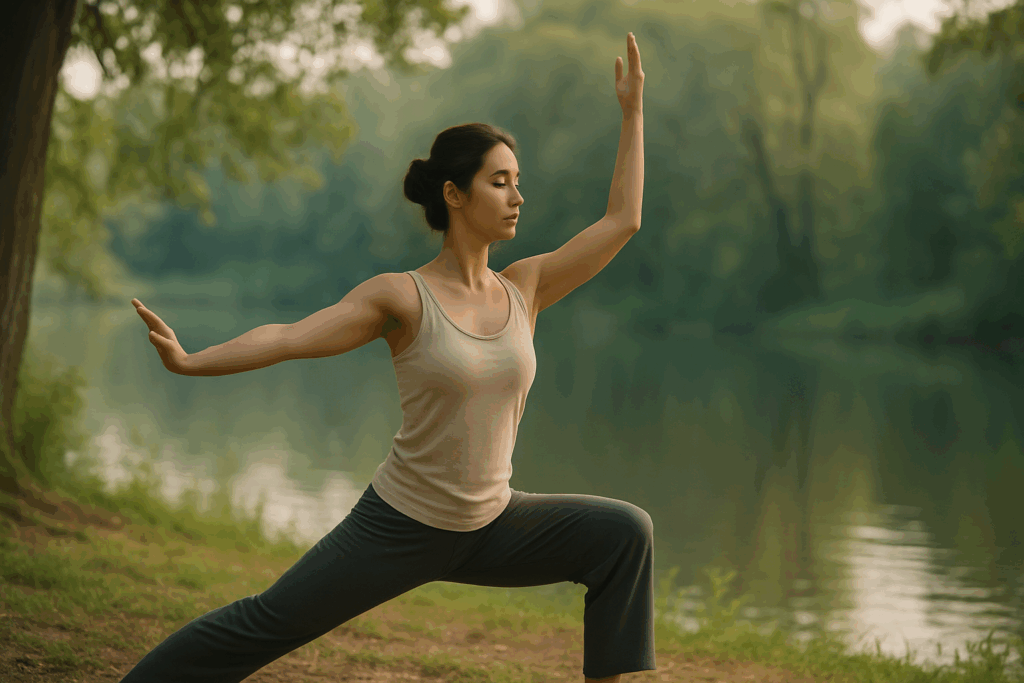
Maximizing Results with Mindful Movement and Breathwork
While physical exertion is central to any fitness routine, the integration of mindful movement and breath awareness can significantly enhance outcomes, especially in a 15 min exercise format. When movements are executed with attention to form and breath, the quality of the workout improves, reducing the likelihood of strain and increasing neuromuscular efficiency. For beginners, this practice of conscious movement fosters a deeper connection between body and mind, which can be incredibly empowering.
Controlled breathing—particularly diaphragmatic or “belly” breathing—during workouts helps to stabilize the core, support posture, and manage exertion levels. It also ensures optimal oxygen exchange, which is crucial during the intensity peaks of a 15 minute exercise workout. Breath control also aids in emotional regulation, helping to transform the session from a purely physical challenge into a centering, rejuvenating experience. In this way, exercise becomes a form of moving meditation, reducing stress while improving cardiovascular and muscular resilience.
Incorporating body scans and mental check-ins before and after each session can further support this mindful approach. These practices encourage awareness of physical sensations, alignment, and muscular engagement. By focusing on precision and presence, even basic exercises such as squats or push-ups take on new depth and purpose. This mindful integration not only reduces the risk of injury but also increases the satisfaction and emotional reward of each workout.
As your practice evolves, you may begin to notice subtler improvements—better posture, increased flexibility, more efficient breathing—all of which contribute to endurance and performance enhancement. These changes, though gradual, are deeply meaningful. They signify a shift from exercising as obligation to exercising as self-care. For those performing a fifteen minute workout at home, this mindset makes it easier to maintain long-term adherence and to appreciate the journey of fitness itself.
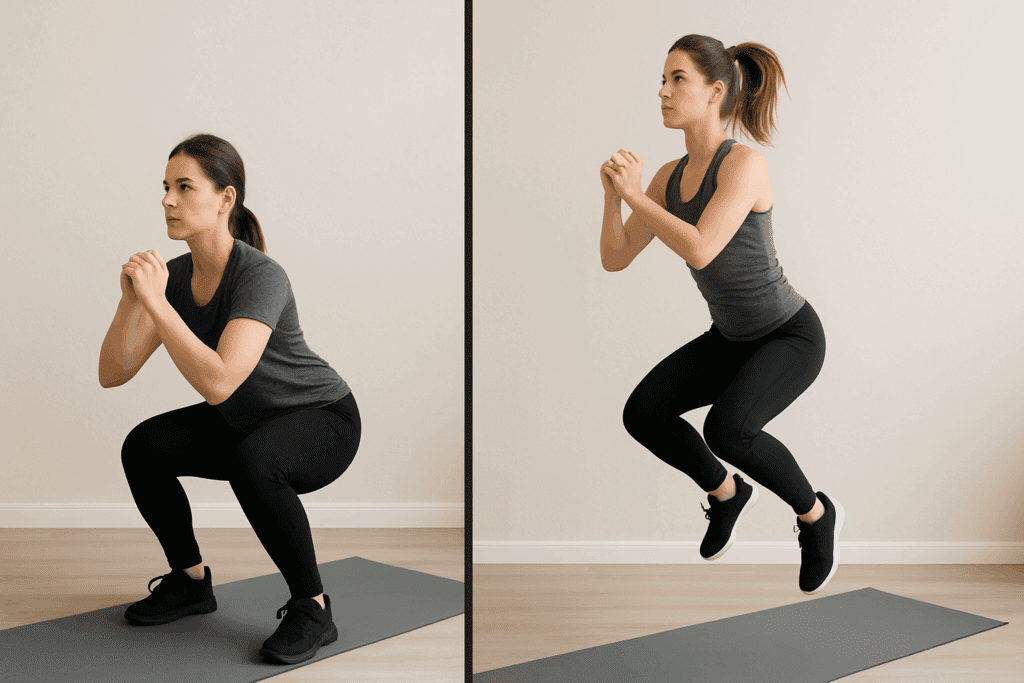
Adapting the 15 Minute Routine for Progression and Personal Goals
One of the strengths of a 15 minute easy workout is its adaptability. While the core format remains constant—warm-up, main set, cool-down—the exercises within can be modified to reflect changing fitness levels, goals, or available space. For example, as strength improves, bodyweight squats can evolve into jump squats, incline push-ups can transition to full push-ups, and static lunges can be replaced with plyometric variations to boost intensity.
For those seeking to enhance muscular endurance, adding isometric holds (like planks or wall sits) or increasing the duration of work intervals can provide a new challenge without requiring extra time. Likewise, if flexibility and mobility are areas of focus, yoga-inspired movements or mobility drills can be woven into the 15 minute exercise routine. This dynamic adaptability ensures that the workout remains fresh and engaging, reducing the risk of plateau or boredom.
Fitness enthusiasts with performance-related goals—such as improving sprint speed, cycling stamina, or general athleticism—can benefit from tailoring their 15 min exercise at home routine to emphasize sport-specific movements. By mimicking the kinetic chains and energy demands of their sport, they can use the routine as a supplementary tool to support their broader training. The key is to prioritize movements that align with personal objectives while retaining the integrity of the workout’s structure.
Even those managing chronic conditions or recovering from injury can benefit from this model. With medical clearance and appropriate modifications, gentle resistance exercises, balance drills, and restorative stretches can create a therapeutic version of the 15 minute workout for beginners. In this way, the routine becomes a universal tool—scalable, inclusive, and effective for a broad range of users and needs.
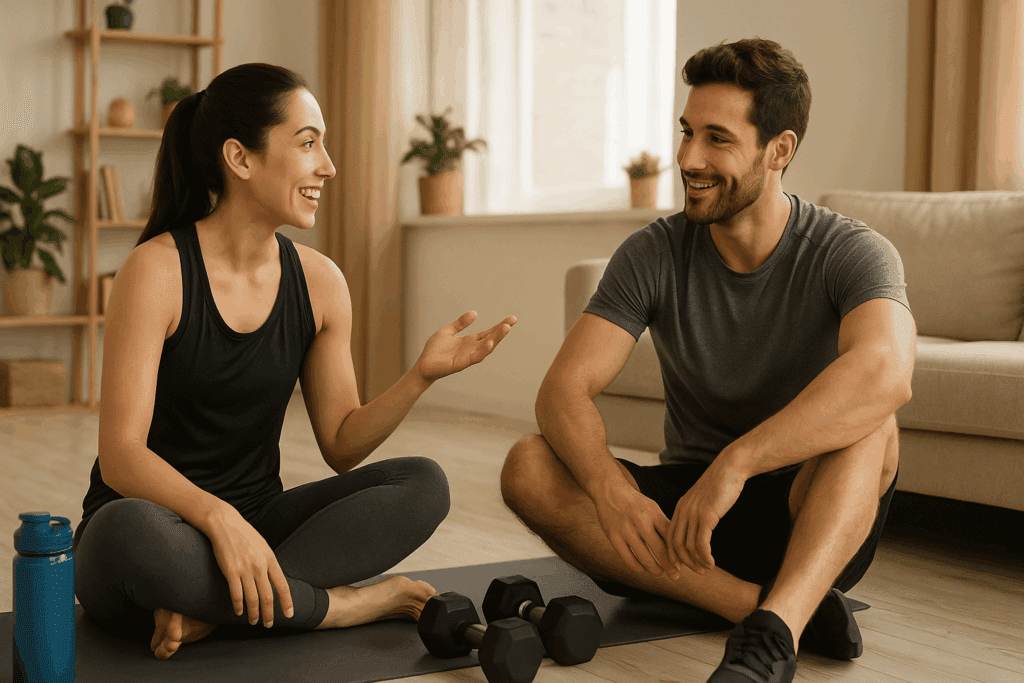
Frequently Asked Questions: 15 Minute Fitness Routines for Strength and Stamina
What are the most common mistakes people make when doing a 15 minute workout for beginners at home?
Many beginners underestimate the importance of preparation and warm-up when starting a 15 minute workout for beginners. Skipping this step can lead to joint stiffness, poor mobility, and even injury, particularly in the knees, shoulders, and lower back. Another common error is choosing exercises that are too advanced or improperly balanced, such as focusing heavily on upper body work without including the lower body. Even though the workout is short, poor form during a 15 minute exercise routine can have cumulative effects over time, resulting in muscular imbalances or strain. Lastly, some users try to push themselves too hard within that compact window, forgetting that sustainable progress is more about consistency than intensity.
Can a 15 minute exercise really help build muscle, or is it just for endurance?
Although most people associate short workouts with cardio and fat burning, a 15 minute exercise can certainly contribute to muscle development, especially when using bodyweight exercises strategically. Movements like slow eccentric push-ups, squat holds, and high-tension planks create sufficient muscular engagement to stimulate growth. Over time, progressive overload can be introduced by altering tempo, increasing reps, or reducing rest periods within the same 15 minute easy workout. While you may not build bodybuilder-level mass, functional strength and lean muscle gain are absolutely achievable with regular fitness 15 minutes sessions. This makes the method particularly effective for people aiming for strength without sacrificing mobility or flexibility.
How can I stay motivated to keep doing a fifteen minute workout at home every day?
Staying committed to a fifteen minute workout at home requires psychological reinforcement as much as physical ability. One powerful strategy is habit-stacking—pairing your workout with another daily habit like morning coffee or brushing your teeth, so it becomes part of a routine. You can also track your progress visually, using journals or fitness apps to celebrate consistency rather than perfection. For variety, consider rotating themes: core day, mobility day, or explosive power day—all within your 15 min exercise at home framework. Sharing your progress with a friend or social group can also reinforce accountability and motivation over time.
What’s the difference between a 15 minute easy workout and high-intensity interval training (HIIT)?
A 15 minute easy workout typically emphasizes accessibility and form over intensity, making it ideal for beginners, older adults, or those recovering from injury. On the other hand, HIIT involves short bursts of maximal effort followed by rest, requiring higher cardiovascular and muscular output. While both formats can fit into a 15 minute workout for beginners plan, their objectives differ—HIIT aims for rapid metabolic change, while easier workouts prioritize endurance, mobility, and consistency. Beginners can start with an easy version and gradually incorporate more intense intervals as their stamina improves. The beauty of a 15 minute exercise model is that it can evolve fluidly between the two approaches without demanding drastic changes in schedule or equipment.
Is it better to do 15 minutes of exercise in the morning or evening?
The effectiveness of a 15 minutes exercise at home session largely depends on when you feel most energized and least distracted. Morning workouts are beneficial for boosting metabolism and enhancing focus throughout the day. They also help establish a proactive mindset, as completing a 15 minute exercise routine early on can give a psychological sense of accomplishment. Evening sessions, on the other hand, may allow for greater flexibility and can serve as a stress-relief mechanism after a long day. There is no objectively superior time—what matters is consistency, and how well the workout fits your natural rhythms and lifestyle demands.
Can a 15 minute exercise routine help with mental health and focus?
Absolutely. A well-structured 15 minute workout for beginners not only improves physical health but also stimulates the release of neurotransmitters such as dopamine and serotonin. These chemical shifts are directly linked to reduced anxiety, improved mood, and enhanced mental clarity. The brevity of the routine can also remove the mental burden of long commitments, making it easier for people with stress, depression, or ADHD to maintain regular movement. Incorporating breath-focused stretches or slow, mindful movements at the end of your fifteen minute workout can amplify the meditative aspect, fostering emotional resilience. This dual benefit of body and mind wellness makes the fitness 15 minutes strategy especially powerful for those seeking holistic improvement.
Should I eat before or after a 15 minute exercise workout?
Whether to eat before or after your 15 minute exercise workout depends on your personal metabolism and the nature of the workout. For low to moderate intensity sessions, fasting or eating a light snack (like a banana or a handful of nuts) 30 minutes beforehand can be sufficient. After the workout, it’s advisable to consume a mix of protein and complex carbohydrates to aid muscle repair and energy replenishment. If your 15 min exercise includes resistance movements or interval bursts, post-workout nutrition becomes more critical. Regardless, hydration should never be overlooked, as even short workouts can affect electrolyte balance and energy levels.
How can I progress from a beginner’s 15 min exercise to something more advanced?
Once your body has adapted to the rhythm and intensity of a 15 min exercise at home regimen, the next step is progressive overload. This doesn’t necessarily mean adding weights—it can also involve performing more repetitions, reducing rest times, or integrating compound movements like burpees or mountain climbers. You can also experiment with resistance bands or simple household props to increase challenge without needing a gym. Eventually, combining two themed 15 minute exercise routines—like strength and cardio—can double your impact in just 30 minutes. This flexibility ensures that your growth remains aligned with your lifestyle and goals, without the rigidity of traditional gym programs.
Are there any populations who should avoid a fifteen minute workout at home?
While a fifteen minute workout at home is generally safe for most individuals, certain populations should proceed with extra caution. These include people recovering from recent surgeries, individuals with severe cardiovascular conditions, or those with mobility limitations that affect basic bodyweight movement. In such cases, consulting a physical therapist or healthcare provider before starting even a 15 minute easy workout is essential. However, with proper modification, even those groups can often perform adapted movements—like chair-assisted squats or wall push-ups—safely within the same timeframe. The key lies in personalization, ensuring that the workout respects physical boundaries while encouraging functional movement.
How will I know if my 15 minute exercise routine is actually improving my fitness?
Improvements from a 15 minute exercise routine may be subtle at first, but tracking key performance indicators can reveal steady progress. These indicators might include faster recovery times, reduced fatigue during daily tasks, improved flexibility, or increased reps completed without rest. Subjective feelings of energy and mood are also strong markers of adaptation, particularly in the context of 15 minutes exercise at home done regularly. Periodic self-assessments—such as timing how long you can hold a plank or measuring how many push-ups you can do in 60 seconds—can offer concrete feedback. When these changes align with better sleep, improved posture, or enhanced focus, it becomes clear that the fitness 15 minutes model is creating real and lasting change.
Final Thoughts: Why Fitness in 15 Minutes Is a Sustainable Path to Strength and Vitality
In a culture that often equates fitness with excess—long hours at the gym, elaborate routines, or expensive equipment—the power of simplicity is frequently overlooked. Yet as this exploration of the 15 minute exercise routine reveals, profound physical transformation can occur within the modest framework of just 15 minutes a day. By focusing on foundational movements, maintaining consistency, and honoring the mind-body connection, individuals can build strength, boost stamina, and improve their overall quality of life—all from the comfort of home.
When thoughtfully designed and practiced with intention, a fifteen minute workout at home transcends its brief duration. It becomes a catalyst for physical empowerment, emotional resilience, and sustainable self-care. For beginners, this approach eliminates the common barriers that prevent people from engaging in regular exercise. For seasoned fitness enthusiasts, it offers a compact yet powerful way to stay active on busy days or during travel.
The integration of mindful movement, breathwork, and adaptive progressions ensures that the 15 minute workout for beginners remains engaging, effective, and relevant across time. Whether your goal is endurance, strength, performance, or simply a better relationship with your body, these short, focused sessions provide a viable and scientifically grounded path forward. In the end, fitness in 15 minutes isn’t just about efficiency—it’s about reclaiming your time, investing in your health, and embracing the idea that consistency and intention are more impactful than complexity or duration.And that’s the true power of the fitness 15 minutes revolution: it meets you where you are, empowers you to move forward, and transforms the idea of wellness into something accessible, meaningful, and deeply personal.
Was this article helpful? Don’t let it stop with you. Share it right now with someone who needs to see it—whether it’s a friend, a colleague, or your whole network. And if staying ahead on this topic matters to you, subscribe to this publication for the most up-to-date information. You’ll get the latest insights delivered straight to you—no searching, no missing out.
Further Reading:
How to Start Exercising: A Beginner’s Guide to Working Out
15-Min Full Body Workout at Home Without Equipment: Try It Now

